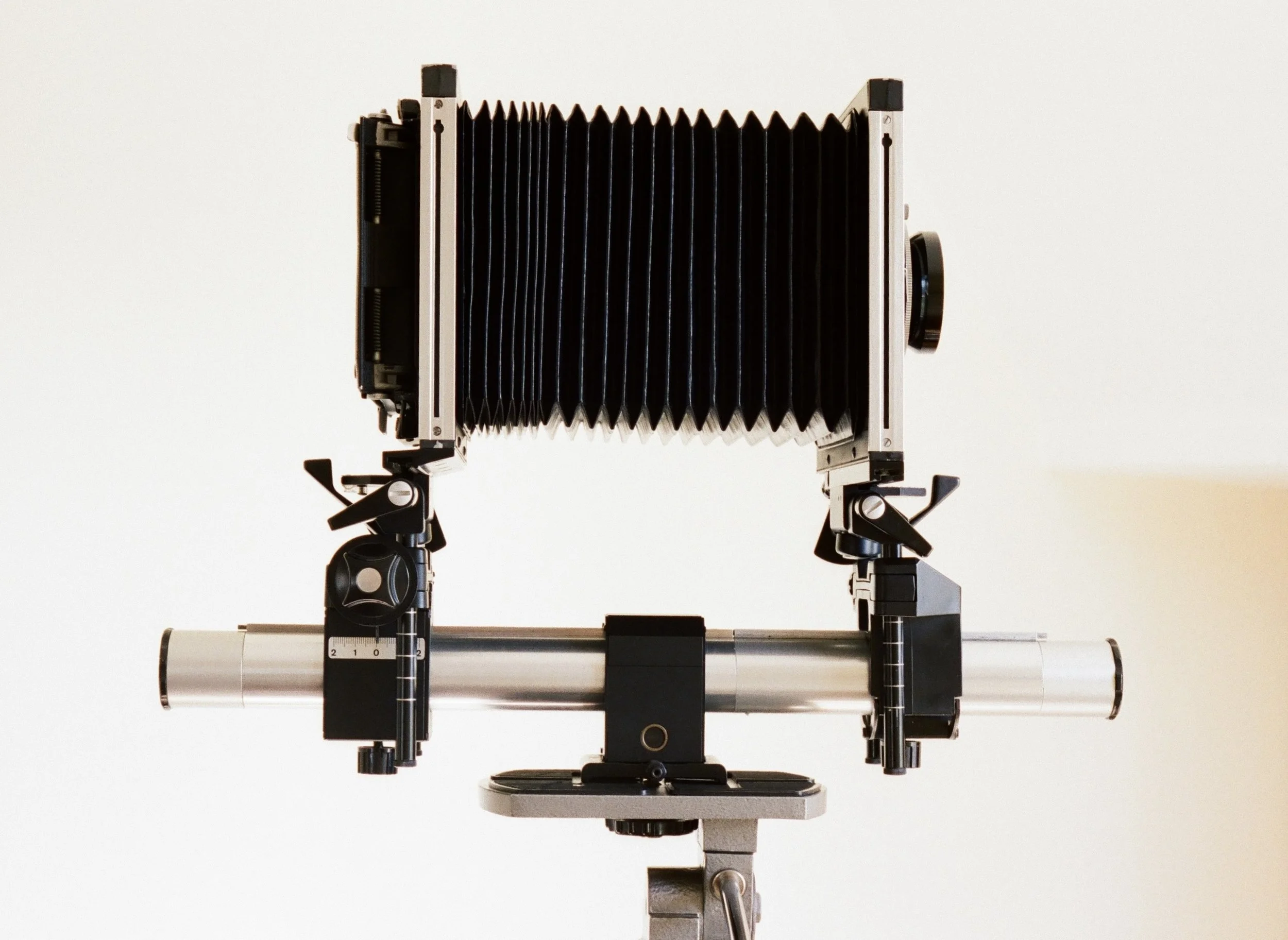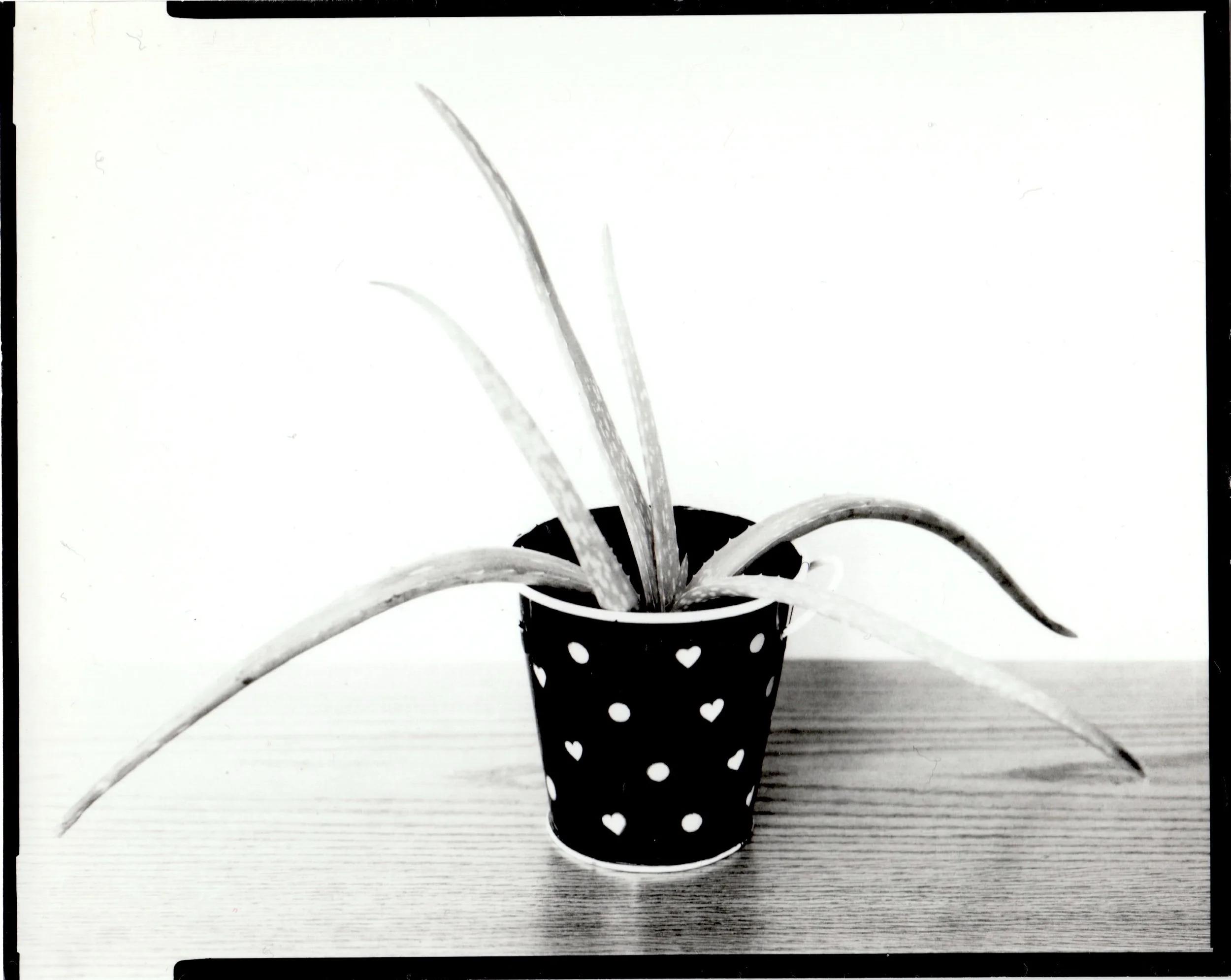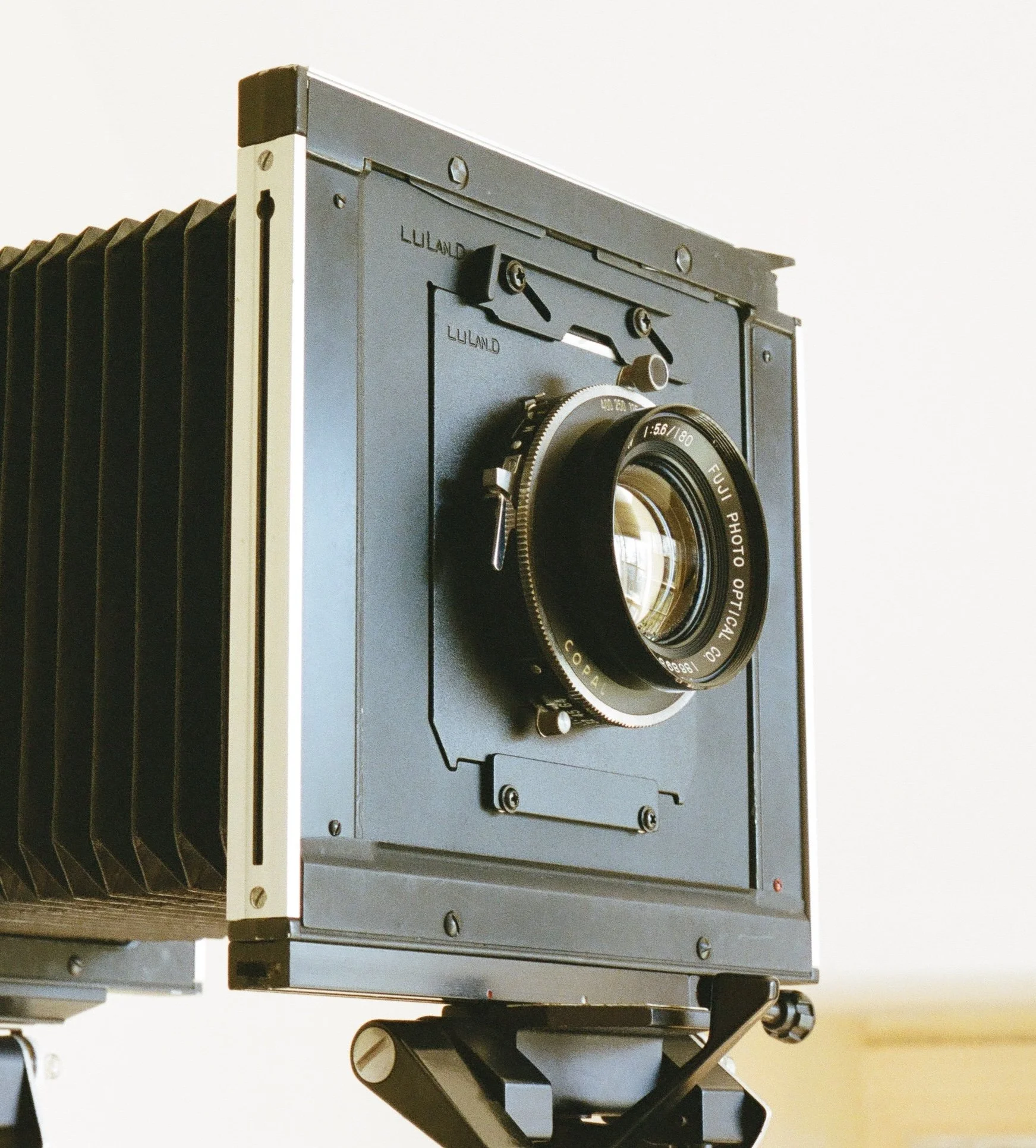4x5 Sinar F
A completely modular monorail system made in Switzerland.
4x5 Sinar F on a Gitzo R. No. 4 tripod head. (Color photos on this page were made with a Nikon F, 55mm f/3.5 Micro-Nikkor-P.C, and Portra 400.)
A super-flexible system
The Sinar is a strong candidate for ‘the most modular large format camera ever made’. Sinar’s system is built around a modular rail with extension pieces, and the rail design is the same for 4x5, 5x7, and 8x10 formats and also between generations and models such as the Norma, F, F1, F2, P, etc., so standards and rail clamps as well as backs, bellows, and other parts are interchangeable. My camera is a Sinar F, a lower-end model but compatible with parts and accessories from the others.
For the photo above, I assembled the camera using two rail pieces (the joint is to the right of the rail clamp). Stroebel (1993, p. 211) has a full-page illustration of the ‘component parts for the Sinar modular view camera’ showing how multiple bellows, a multipurpose standard, and rail extensions can be added to assemble a long focal length camera, and also how a 4x5 can be reconfigured as a 5x7 or 8x10 by swapping out the bellows and back.
Sinar F setup on a Majestic tripod. The resulting photograph is right below:
Aloe. Sinar F, 210mm f/6.8 Rodenstock Geronar, Harman Direct Positive paper.
Design
Comparing the Sinar F to the Super Cambo and Calumet CC-400:
Rail: Sinar: round tube with extension pieces. Cambo: solid, square cross section, non-extendable but the entire rail could be swapped out. Calumet: solid, round cross-section, rail cannot be swapped out.
Bellows: Sinar and Cambo have removable bellows and bag bellows are available. Calumet: fixed bellows (this is why the rail swap-out capability is not needed).
Back: Sinar: Graflok, detachable. Cambo: non-Graflok, detachable, bail. Calumet: non-Graflok, non-detachable, bail, revolving.
Focus: Sinar: rear coarse and fine, front single focus. Cambo: single front and rear. Calumet: coarse and fine, front and rear.
Tilts: Sinar: base tilts. Cambo and Calumet: axis tilts.
Construction: Sinar: extensive use of plastic. Cambo and Calumet: nearly all metal. All three cameras are solid and stable.
Weight and compactness: All three are heavy and bulky. The Sinar is a bit less so, because its base tilt design has no knobs protruding from the sides, and a rail section can be removed for packing. But if portability is a concern, a wood field camera like the Tachihara might be a better choice.
This comparison is specific to my cameras — not all details apply to variants such as the Sinar F2 and Cambo SC. Also, as the Sinar and Cambo are modular systems, parts can be swapped out so specific builds can vary.
4x5 Sinar F on a Gitzo R. No. 4 tripod head.
The Sinar has an elaborate provision to set depth of focus (I don’t use it)
The Sinar F has numerical scales that can be used to figure how to orient the lens and film planes (i.e., set ‘movements’) to get the desired depth of focus and perspective effects. But movements can also be set by inspection and trial and error, as on other cameras. And that works for me.
4x5 Sinar F with a LuLand Linhof lens board adapter and lens board.
References / further reading
Camera manual: orphancameras.com
More references:
Adams, Ansel. The Camera. Boston: Little, Brown, 1980. A Sinar camera is shown on pp. 30 and 32. It is a different model, but due to the Sinar system’s modularity many of the components are compatible with the Sinar F.
Stroebel, L. 1993. View Camera Technique, 6th ed. Boston: Focal Press.




